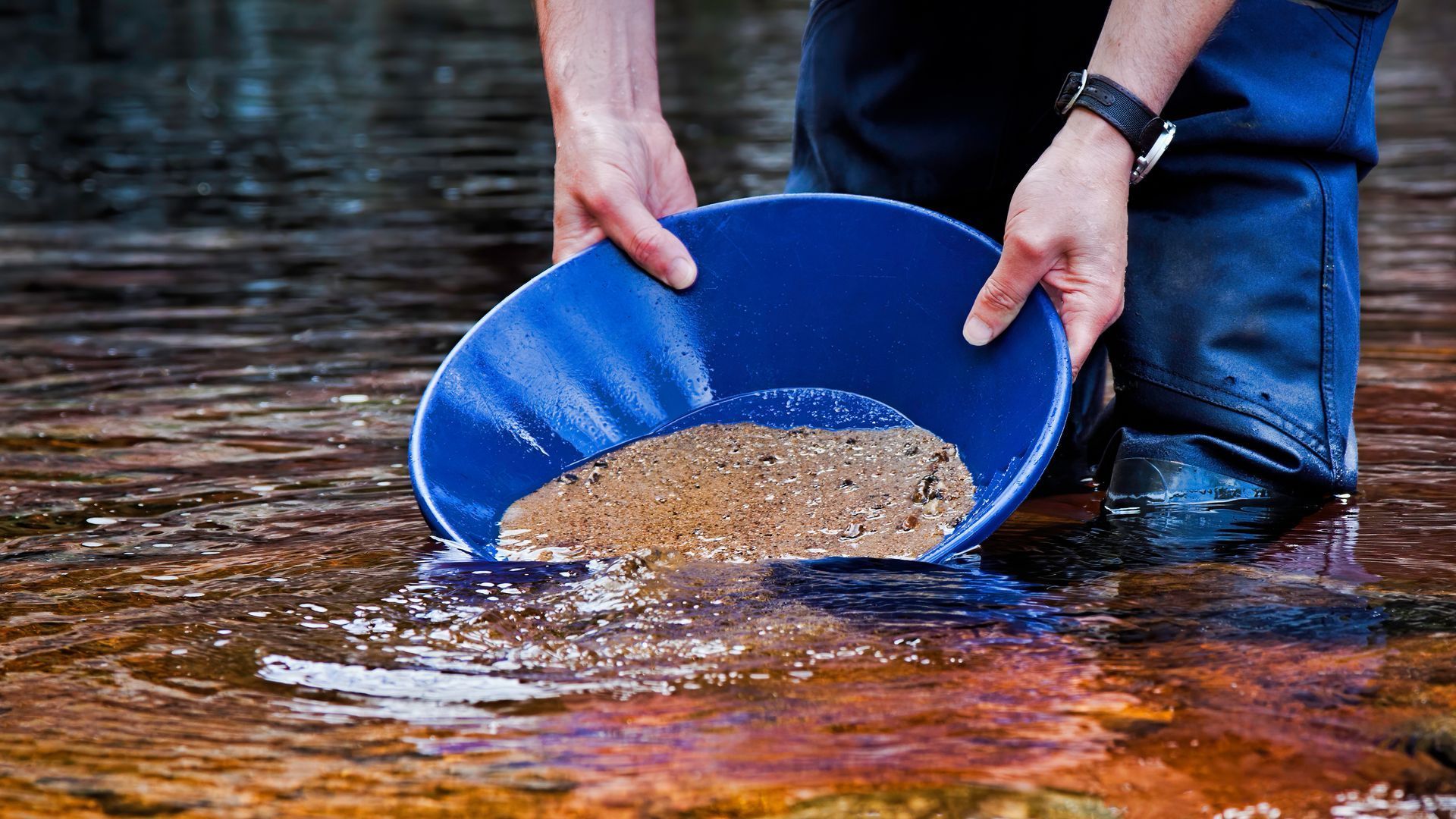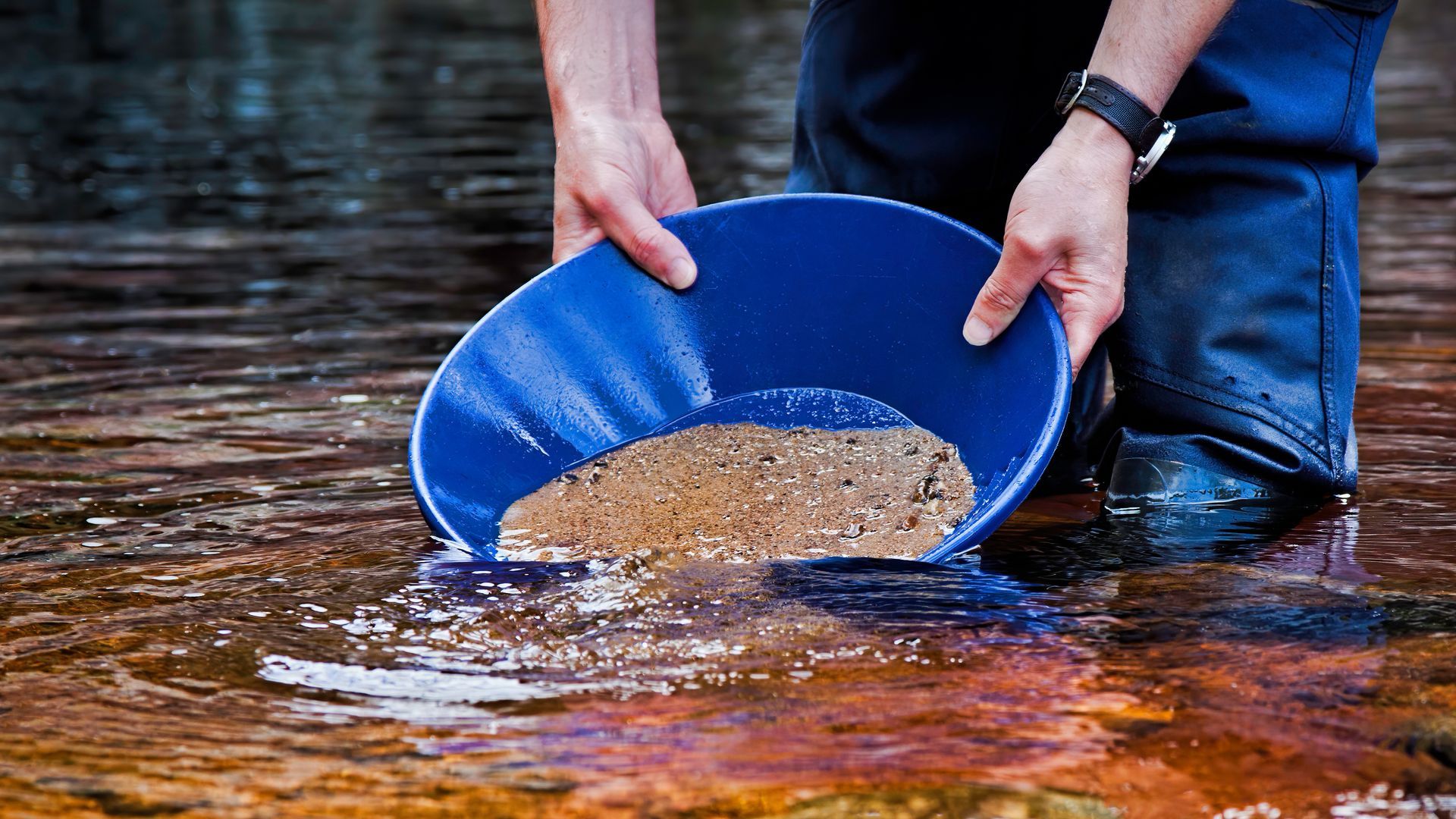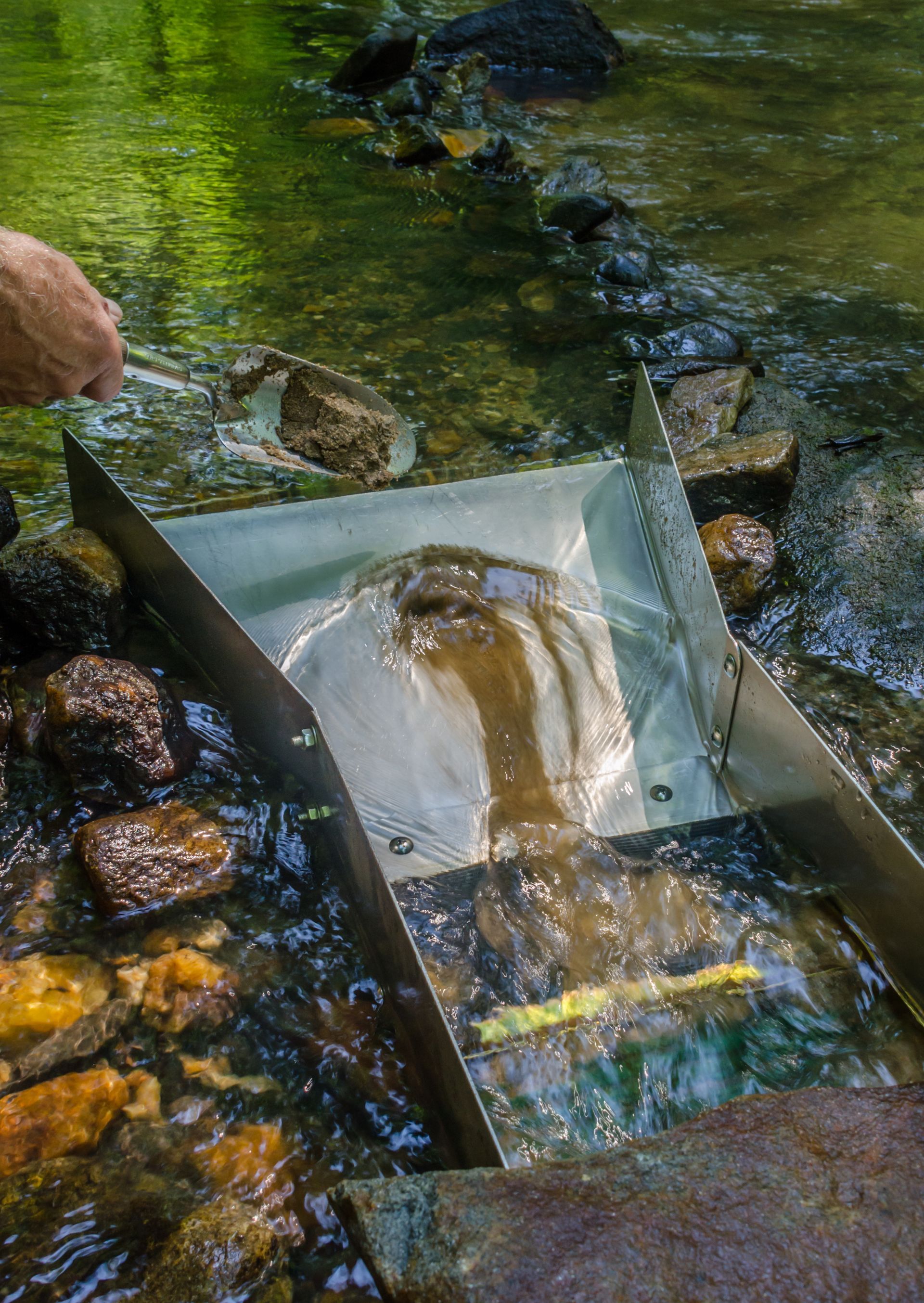Gold Panning in North Carolina: How to Get Rich in Carolina’s Belt


Gold Panning in North Carolina
Gold panning can be fun for the whole family and is a unique way to socialize in a natural setting. The majority of gold deposits and the most productive mines are located in the "Carolina Belt". Places with natural deposits like this are where you can try your hand at gold panning.
Let’s look closer at how to pan for gold so you’re ready to strike big next time you go gold panning in North Carolina!
Types of Gold Prospecting
Panning
Panning refers to using a pan when gold prospecting and is the most common way to search for gold. Panning is a simpler method and is user-friendly for beginners or young children. Although it can be tiring work, panning is an effective way not to miss any potential gold flakes when prospecting.
Sluicing
Sluicing refers to the use of a sluice box when gold prospecting. Sluice boxes are typically made from plastic or aluminum and have riffles to separate the gold from the gravel. One of the benefits of using a sluice box is it generally is bigger than a pan and can hold more gravel. This method will require more strength and stamina than traditional methods.
Crevicing
Crevicing is a method of extracting gold that doesn’t require you to process lots of gravel or hold heavy equipment. Crevicing is where you use a small tool to pick through wide and deep crevices to capture gold.
How to Pan for Gold
Equipment
Clothing:
Gold panning is typically done in mountain streams and general bodies of water. Choose weather-appropriate clothing and wear shoes that you don't mind getting wet or are waterproof.
Dishes/Pans:
You’ll need a strainer or classifier, a pan, and a sniffer bottle for sucking up small flakes of gold.
Tools :
You’ll need a large shovel to dig in the dirt. You can also bring a smaller spade or sturdy spoon for gouging out crevices. Make sure to bring a container to keep your gold in when you find some!
Extra Supplies:
You can also bring other protections like mosquito repellent, sunscreen, and gloves.
Finding a Spot
To make things easy on yourself, you can search for a local gold panning company that provides you with everything you need for gold panning or charges a small fee for renting supplies. If you want to try gold panning on your own and the stream isn’t on public land, make sure you have permission from the landowner as most land in North Carolina is privately owned.
The most productive gold mines in North Carolina are located in central Piedmont, including Mecklenburg, Cabarrus, Rowan, Davidson, Guilford, Stanly, Montgomery, Randolph, Moore, and McDowell County. However, if you have permission from the landowner you could attempt panning in any river or stream in the state.

Filling a Pan
Once you’ve picked the perfect spot, you'll need to fill your pan. You can fill your pan with rock sediment from the river or use your shovel to dig up some dirt from the river bed. Remove debris and large rocks that might get in the way of spotting the gold bits.
Panning
Once you've filled your gold pan, submerge the pan in the water and gently shake the pan to remove any lighter sediment. Gold is a heavy material and will likely sink to the bottom of the pan. Don’t shake too hard or you’ll lose the heavier pieces.
Rinsing and Repeating: Gold panning requires patience which is why we mentioned bringing waterproof shoes you’ll be comfortable in. You’ll need to continually agitate the pan to remove the lighter sediments and break up any clay pieces. The heavier ones that could contain gold will continue to fall to the bottom and those are the pieces you’ll inspect.
Inspecting for Gold: Use your fingers to inspect the leftover pieces in your pan or sluice. You can also use a snuffer bottle to suck up any tiny gold flakes that are hard to grab. Remember, digging in the river banks is not allowed.
Cleaning Up: Make sure to Leave No Trace whenever you’re outdoors and try to return the area better than how you found it. Fill in any holes you’ve dug and don’t leave any equipment behind.
How to Identify Gold
It’s hard to mistake the beautiful gold color for something else. However, pyrite and yellow-colored mica are sometimes mistaken for gold. One main distinction between them is their malleability. Gold is very soft whereas pyrite and yellow-colored mica are brittle.
The History of Gold Panning In The Carolinas
Many people don’t know that the first documented gold nugget was found in 1799 in Cabarrus County, North Carolina. Conrad Reed found a 17-pound gold nugget while fishing in Little Meadow Creek. This discovery started the first gold rush in the nation's history and North Carolina led the nation in gold production until 50 years later when the California Gold Rush began.
Lucky Strike Campground
If you want an all-in-one experience, check out Lucky Strike Campground in Marion, North Carolina. Lucky Strike is a gold and gem mine and campground with cozy lodging and the Miner’s Diner offers delicious meals. Step back in time to the days of old-fashioned gold mining by enjoying family-friendly gold panning, sluicing, and crevicing in Second Broad River.
When you’re done panning, you can head over to the Miner’s Diner for delicious cuisine like a Bonanza Burger or Klondike Dog. Lucky Strike Campground boasts 59 campsites, with most featuring full hookups including electric, water, and sewer. Don’t stress about finding a place to stay after your gold panning excursion and book yourself convenience in the great outdoors at Lucky Strike Gold & Gem Mine.

